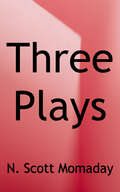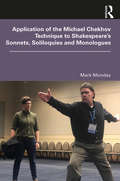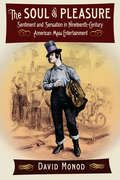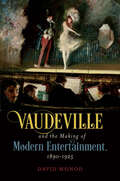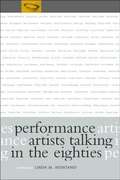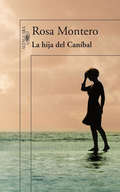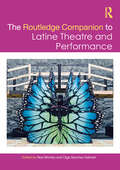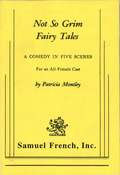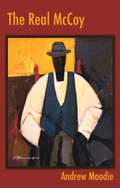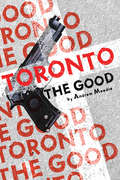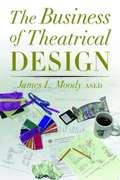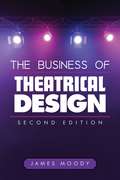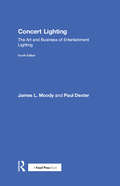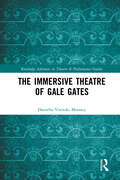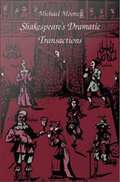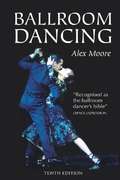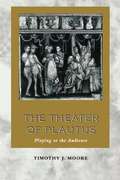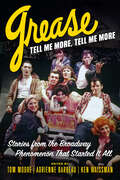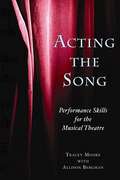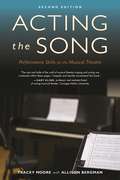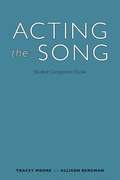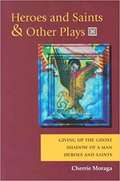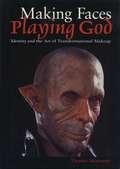- Table View
- List View
Three Plays: The Indolent Boys, Children of the Sun, and the Moon in Two Windows (Stories and Storytellers Series)
by N. Scott MomadayLong a leading figure in American literature, N. Scott Momaday is perhaps best known for his Pulitzer Prize-winning House Made of Dawn and his celebration of his Kiowa ancestry, The Way to Rainy Mountain. <p><p>Momaday has also made his mark in theater through two plays and a screenplay. Published here for the first time, they display his signature talent for interweaving oral and literary traditions. <p><p>The Indolent Boys recounts the 1891 tragedy of runaways from the Kiowa Boarding School who froze to death while trying to return to their families. The play explores the consequences, for Indian students and their white teachers, of the federal program to "kill the Indian and save the Man." <p><p>A joyous counterpoint to this tragedy, Children of the Sun is a short children's play that explains the people's relationship to the sun. <p><p>The Moon in Two Windows, a screenplay set in the early 1900s, centers on the children of defeated Indian tribes, who are forced into assimilation at Carlisle, Pennsylvania, where the U.S. government established the first off-reservation boarding school. <p><p>Belonging with the best of Momaday's classic writing, these plays are works of a mature craftsman that preserve the mythic and cultural tradition of unique tribal communities in the face of an increasingly homogeneous society.
Application of the Michael Chekhov Technique to Shakespeare’s Sonnets, Soliloquies and Monologues
by Mark MondayApplication of the Michael Chekhov Technique to Shakespeare’s Sonnets, Soliloquies, and Monologues illustrates how to apply the Michael Chekhov Technique, through exercises and rehearsal techniques, to a wide range of Shakespeare’s works. The book begins with a comprehensive chapter on the definitions of the various aspects of the Technique, followed by five chapters covering Shakespeare’s sonnets, comedies, tragedies, histories, and romances. This volume offers a very specific path, via Michael Chekhov, on how to put theory into practice and bring one’s own artistic life into the work of Shakespeare. Offering a wide range of pieces that can be used as audition material, Application of the Michael Chekhov Technique to Shakespeare’s Sonnets, Soliloquies, and Monologues is an excellent resource for acting teachers, directors, and actors specializing in the work of William Shakespeare. The book also includes access to a video on Psychological Gesture to facilitate the application of this acting tool to Shakespeare’s scenes.
The Soul of Pleasure: Sentiment and Sensation in Nineteenth-Century American Mass Entertainment
by David MonodShow business is today so essential to American culture it's hard to imagine a time when it was marginal. But as David Monod demonstrates, the appetite for amusements outside the home was not "natural": it developed slowly over the course of the nineteenth century. The Soul of Pleasure offers a new interpretation of how the taste for entertainment was cultivated. Monod focuses on the shifting connection between the people who built successful popular entertainments and the public who consumed them. Show people discovered that they had to adapt entertainment to the moral outlook of Americans, which they did by appealing to sentiment.The Soul of Pleasure explores several controversial forms of popular culture—minstrel acts, burlesques, and saloon variety shows—and places them in the context of changing values and perceptions. Far from challenging respectability, Monod argues that entertainments reflected and transformed the audience’s ideals. In the mid-nineteenth century, sentimentality not only infused performance styles and the content of shows but also altered the expectations of the theatergoing public. Sentimental entertainment depended on sensational effects that produced surprise, horror, and even gales of laughter. After the Civil War the sensational charge became more important than the sentimental bond, and new forms of entertainment gained in popularity and provided the foundations for vaudeville, America’s first mass entertainment. Ultimately, it was American entertainment’s variety that would provide the true soul of pleasure.
Vaudeville and the Making of Modern Entertainment, 1890–1925
by David MonodToday, vaudeville is imagined as a parade of slapstick comedians, blackface shouters, coyly revealed knees, and second-rate acrobats. But vaudeville was also America's most popular commercial amusement from the mid-1890s to the First World War; at its peak, 5 million Americans attended vaudeville shows every week. Telling the story of this pioneering art form's rise and decline, David Monod looks through the apparent carnival of vaudeville performance and asks: what made the theater so popular and transformative? Although he acknowledges its quirkiness, Monod makes the case that vaudeville became so popular because it offered audiences a guide to a modern urban lifestyle. Vaudeville acts celebrated sharp city styles and denigrated old-fashioned habits, showcased new music and dance moves, and promulgated a deeply influential vernacular modernism. The variety show's off-the-rack trendiness perfectly suited an era when goods and services were becoming more affordable and the mass market promised to democratize style, offering a clear vision of how the quintessential twentieth-century citizen should look, talk, move, feel, and act.
Performance Artists Talking in the Eighties
by Linda M. MontanoThe interaction of the performance artist Linda Montano with other performance artists to consider how early events associated with sex, food, money/fame, or death/ritual resurfaced in their later work has resulted in a talking performance that documents the production of art in a misunderstood community. Her discussions with more than 100 artists, focused on the relationship between art and life, history and memory, the individual and society, and the potential for individual and social change.
La hija del Caníbal
by Rosa MonteroLucía lleva diez años con Ramón. Sus vidas transcurren sin pasiones ni tropiezos, hasta el día en que deciden pasar el fin de año en Viena y Ramón desaparece en el aeropuerto. PREMIO NACIONAL DE LAS LETRAS 2017 Lucía no se conforma con que sea la policía quien resuelva la misteriosa desaparición de su marido y, gracias a la ayuda de Adrián, un extraño joven, y del anarquista Fortuna, investiga por su cuenta el paradero de Ramón... De esta forma, algo que en principio parecía un drama, se convierte en una oportunidad para vivir con más intensidad. ** Premio Leyenda 2019 concedido por la Asociación de Librerías de Madrid El crítico literario Santos Sanz Villanueva dijo...«Estamos en la más novelesca de las novelas de Montero, a la vez que, aunque parezca una paradoja, en la más realista, en la que cala con mayor hondura y verdad en los fantasmas, complejidades, limitaciones y grandeza de la existencia.»
The Routledge Companion to Latine Theatre and Performance (Routledge Companions)
by Noe Montez Olga Sanchez SaltveitThe Routledge Companion to Latine Theatre and Performance traces how manifestations of Latine self-determination in contemporary US theatre and performance practices affirm the value of Latine life in a theatrical culture that has a legacy of misrepresentation and erasure.This collection draws on fifty interdisciplinary contributions written by some of the leading Latine theatre and performance scholars and practitioners in the United States to highlight evolving and recurring strategies of world making, activism, and resistance taken by Latine culture makers to gain political agency on and off the stage. The project reveals the continued growth of Latine theatre and performance through chapters covering but not limited to playwriting, casting practices, representation, training, wrestling with anti-Blackness and anti-Indigeneity, theatre for young audiences, community empowerment, and the market forces that govern the US theatre industry. This book enters conversations in performance studies, ethnic studies, American studies, and Latina/e/o/x studies by taking up performance scholar Diana Taylor’s call to consider the ways that “embodied and performed acts generate, record, and transmit knowledge.”This collection is an essential resource for students, scholars, and theatremakers seeking to explore, understand, and advance the huge range and significance of Latine performance.
Not So Grimm Fairy Tales
by Patricia MontleySatire / 15f (doubling possible) / Bare stage / Five scenes present unusual variations on familiar tales. In Little Red and the Big Bad She Wolf Red is invited by Mae Wolf to quit Harvard Business School and get a start in the service selling business despite Granny's opposition (she is Mae's senior partner). In Bumble Stiltskin and the Baby Business Rumpel's put upon wife implores the Queen to keep her royal baby and offers to set up a Day Care Center if she gets government support. Also included are Snow White and the Anti Freeze, Jack and the Marijuana Stalk and Cinderella.
The Real McCoy
by Andrew MoodieElijah McCoy, born in Canada to runaway American slaves, showed so much promise in school that he won a scholarship to study mechanical engineering at Edinburgh University. McCoy moved to the US, where no one believed a black man could be an engineer and so he was set to stoking boilers. Nevertheless, McCoy devised a solution to one of the greatest problems facing steam locomotion that was sold worldwide with the marketers' proviso that McCoy's race be concealed.
Toronto the Good
by Andrew MoodieWhen top Crown attorney Thomas Matthews, a victim of racial profiling himself, is assigned to prosecute the accused against a Left-leaning white attorney, tensions mount and personal politics bubble to the surface. Cutting deep into the lawyers' private lives, their families and foibles are richly portrayed as an integral part of Toronto's shifting mosaic. From an ostensibly routine traffic stop, each character must come to terms with the city's racial politics and how they have shaped their own beliefs and prejudices. Written in response to the rise of gun crime in the streets of Canada's largest city, Toronto the Good probes the problems that perpetuate the changing metropolis and explores how they have been allowed to flourish.
The Business of Theatrical Design
by James MoodyFor theatrical design students and theater professionals, here is the essential guide to marketing your skills, furthering your career, and operating a successful business! In The Business of Theatrical Design, design veteran James Moody shares his proven techniques to help costume, scenic, and lighting designers become successful businesspeople. Here is the latest information regarding IRS, state, and business liabilities; salary and fee scales; equipment costs; professional organizations; union and contract issues; and much more. Plus dozens of working producers, promoters, and designers share their insights and offer a thorough, true-to-life profile of this competitive industry. An indispensable resource for anyone looking to pursue a career in the theater!
The Business of Theatrical Design, Second Edition
by James MoodyWritten by a leading design consultant and carefully updated with the latest information on the industry, this is the essential guide to earning a living, marketing skills, furthering a design career, and operating a business. With more than thirty years of backstage and behind-the-scenes experience in theater, film, television, concerts, and special events, James Moody shares his success secrets for the benefit of design students and working designers. Topics include: Finding and landing dream assignmentsNegotiating feesSetting up ideal working spacesBuilding the perfect staffOvercoming fears of accounting and record-keepingChoosing the right insuranceJoining the right unions and professional organizationsAnd more In addition to revealing how to get the great design jobs in traditional entertainment venues, the author shows designers how to think outside the box and seize creative, lucrative opportunities—such as those in theme parks, in concert halls, and with architectural firms. Providing the keys for passionate, talented designers to become successful businesspeople, The Business of Theatrical Design is a must-read for novices and established professionals alike.
Concert Lighting: The Art and Business of Entertainment Lighting
by James Moody Paul DexterConcert Lighting: Tools, Techniques, Art, and Business Fourth Edition provides readers with an updated look at how to succeed in the complex world of concert lighting design and technology. The authors have reorganized the book into three comprehensive and thoroughly revised sections, covering history, equipment and technology, and design, and containing new information on LED technology, pixel mapping, projection options, media servers, automated lighting, solutions for moving lights, DMX, and Ethernet problems, and designer communication and collaboration. This book also explores the cross-media use of concert lighting techniques in film, video, theatre, and the corporate world, highlighted with advice from master designers such as Bruce Rodgers, Cosmo Wilson, and Sarah Landau. From securing precious contracts to knowing the best equipment to use to design a show, Concert Lighting covers everything a designer needs to know about working in the touring industry.
The Cambridge Companion To British Theatre, 1730-1830
by Jane Moody Daniel O'QuinnThis Companion offers a wide-ranging and innovative guide to one of the most exciting and important periods in British theatrical history. The scope of the volume extends from the age of Garrick to the Romantic transformation of acting inaugurated by Edmund Kean. It brings together cutting-edge scholarship from leading international scholars in the long eighteenth century, offering lively and original insights into the world of the stage, its most influential playwrights and the professional lives of celebrated performers such as James Quin, George Anne Bellamy, John Philip Kemble, Dora Jordan, Fanny Abington and Sarah Siddons. The volume includes essential chapters about eighteenth-century acting, production and audiences, important surveys of key theatrical forms such as tragedy, comedy, melodrama and pantomime as well as a range of exciting thematic essays on subjects such as private theatricals, 'black' theatre and the representation of empire.
The Immersive Theatre of GAle GAtes (Routledge Advances in Theatre & Performance Studies)
by Daniella Vinitski MooneyThis book focuses on experimental theatre company, GAle GAtes, credited as "the true innovator" of the contemporary immersive movement. The Immersive Theatre of GAle GAtes is a case-study of this little-known but visionary company, with a focus on its development and dramaturgy. Through rare archival and primary research, as well as historical context, the text chronicles company narrative and celebrates the artistic impulse. The book employs descriptive-narrative and dramaturgical analysis and is composed of historical research, rare archives, and primary source interviews. Chapters focus on the trajectory of the avant-garde leading up to the climate in which the company formed, company formative years, and major works and a discussion on the interdisciplinary and theoretical frameworks critical to its understanding. This study will be of great interest to students and scholars in theatre and performance studies and essential reading for theatre artist and historian alike, with a focus on the experimental theatre landscape.
Shakespeare's Dramatic Transactions
by Michael E. MooneyShakespeare's Dramatic Transactions uses conventions of performance criticism--staging and theatrical presentation--to analyze seven major Shakespearean tragedies: Hamlet, Othello, King Lear, Macbeth, Antony and Cleopatra, Richard II, and Richard III. As scholars and readers increasingly question the theoretical models used to describe the concepts of "mimesis" and "representation," this book describes how the actor's stage presentation affects the actor's representational role and the ways in which viewers experience Shakespearean tragedy. Michael Mooney draws on the work of East German critic Robert Weimann and his concept of figurenposition--the correlation between an actor's stage location and the speech, action, and stylization associated with that position--to understand the actor/stage location relationship in Shakespeare's plays. In his examination of the original staging of Shakespeare's tragedies, Mooney looks at the traditional interplay between a downstage "place" and upstage "location" to describe the difference between non-illusionistic action (often staged near the audience) and the illusionistic, localized action that characterizes mimetic art. The innovative and insightful approach of Shakespeare's Dramatic Transactions brings together the techniques of performance criticism and the traditional literary study of Shakespearean tragedy. In showing how the distinctions of stage location illuminate the interaction among language, representation, Mooney's compelling argument enhances our understanding of Shakespeare and the theater.
Ballroom Dancing (Performing Arts Ser.)
by Alex MooreNow in its tenth edition, this classic and comprehensive handbook has been revised to bring it up to date in keeping with changes on the dance floor and in the rules of dance competitions. The Quickstep, Waltz, Foxtrot, and Tango are all illustrated and described in great detail.
The Theater of Plautus: Playing to the Audience
by Timothy J. MooreThe relationship between actors and spectators has been of perennial interest to playwrights. The Roman playwright Plautus (ca. 200 BCE) was particularly adept at manipulating this relationship. Plautus allowed his actors to acknowledge freely the illusion in which they were taking part, to elicit laughter through humorous asides and monologues, and simultaneously to flatter and tease the spectators.<P><P>These metatheatrical techniques are the focus of Timothy J. Moore's innovative study of the comedies of Plautus. The first part of the book examines Plautus' techniques in detail, while the second part explores how he used them in the plays Pseudolus, Amphitruo, Curculio, Truculentus, Casina, and Captivi. Moore shows that Plautus employed these dramatic devices not only to entertain his audience but also to satirize aspects of Roman society, such as shady business practices and extravagant spending on prostitutes, and to challenge his spectators' preconceptions about such issues as marriage and slavery. These findings forge new links between Roman comedy and the social and historical context of its performance.
Grease, Tell Me More, Tell Me More: Stories from the Broadway Phenomenon That Started It All
by Tom Moore Adrienne Barbeau Ken Waissman"Grease, Tell Me More, Tell Me More is a fabulous rockin' and rollin' origin story with every juicy inspiration that went into creating it. . . . A must read for all Grease fans." —Didi Conn, Grease's "Frenchy" What started as an amateur play with music in a converted trolly barn in Chicago hit Broadway fifty years ago—and maintains its cultural impact today. Grease opened downtown in the Eden Theatre February 14, 1972, short of money, short of audience, short of critical raves, and seemingly destined for a short run. But like the little engine that could, this musical of high school kids from the 1950s moved uptown. On December 8, 1979, it became the longest running show—play or musical—in Broadway history. Grease: Tell Me More, Tell Me More is a collection of memories and stories from over one hundred actors and musicians, including the creative team and crew who were part of the original Broadway production and in the many touring companies it spawned. Here are stories—some touching, some hilariously funny—from names you may recognize: Barry Bostwick, John Travolta, Adrienne Barbeau, Treat Williams, Marilu Henner, Peter Gallagher, and others you may not: Danny Jacobson, creator of Mad About You; Tony-winning Broadway directors Walter Bobbie and Jerry Zaks; bestselling authors Laurie Graff and John Lansing; television stars Ilene Kristen, Ilene Graff, and Lisa Raggio, and many, many more. Read about the struggles, the battles, and the ultimate triumphs achieved in shaping the story, characters, and music into the iconic show now universally recognized the world over.
Acting the Song: Performance Skills for the Musical Theatre
by Tracey Moore Allison BergmanActing the Song offers a contemporary, integrated approach to singing in musicals that results in better-trained, smarter performers who can use song to add drama and dimension to their roles. Directors, teachers of musical theater, and students--including actors, singers, or dancers--will find time-tested advice, exercises and worksheets for all skill levels. This book guides readers through musical theater elements, classroom workshops, and the world of professional auditions and performances. Chapters cover vocal and physical warm-ups, body movement, finding subtext, creating a character, song structure, interpreting text of music and lyrics, risks and spontaneity, memorization, collaboration, keeping a performance fresh, and much more. Both teachers and students will appreciate the sections for beginning, intermediate, and advanced performers. Everyone involved in musical theater, from new students to working professionals, will benefit from this rich resource.
Acting the Song: Performance Skills for the Musical Theatre
by Tracey Moore Allison BergmanActing the Song offers a contemporary, integrated approach to singing in musicals that results in better-trained, smarter performers everyone wants to work with. In this new, thoroughly updated edition of the paperback, directors and teachers of musical theater will find guidance in developing and leading musical theater elements, classroom workshops, and the world of professional auditions and performances. A companion ebook specifically for students-including actors, singers, or dancers-contains time-tested advice, exercises, and worksheets for all skill levels, with links to additional resources online. Subjects for both versions cover:Singing and acting terminologyUse of microphones, recording devices, and other technologyVocal and physical warm-ups, movements, and gesturesCreating a characterFinding subtext, interpreting music and lyrics, and song structureCollaborating with other actorsKeeping a performance fresh and newUsing social media and online audition sitesTeachers and students alike will appreciate the sections for beginning, intermediate, and advanced performers. Covering all changes to the industry, education, music styles, and audition protocols, everyone involved in musical theater, from new students to working professionals, will benefit from this rich resource.Allworth Press, an imprint of Skyhorse Publishing, publishes a broad range of books on the visual and performing arts, with emphasis on the business of art. Our titles cover subjects such as graphic design, theater, branding, fine art, photography, interior design, writing, acting, film, how to start careers, business and legal forms, business practices, and more. While we don't aspire to publish a New York Times bestseller or a national bestseller, we are deeply committed to quality books that help creative professionals succeed and thrive. We often publish in areas overlooked by other publishers and welcome the author whose expertise can help our audience of readers.
Acting the Song: Student Companion Ebook
by Tracey Moore Allison BergmanUsed in tandem with Acting the Song: Performance for the Musical Theatre, this Student Companion Ebook guides students through three semesters (beginning, intermediate, and advanced) of musical theatre song study. It answers the many questions students using this method may have, including some that they may be reluctant to ask-about fear, handling criticism, understanding their type, dealing with bad auditions, and the best use of social media, among others. Worksheets completed by real-life students can be used as models of best practice and will serve to inspire students to dig deeply and explore their own thoughts about the songs.Teachers using Acting the Song will find this ebook companion indispensable, and students will come to class more prepared, ready to work, and more open to learning.
Heroes And Saints And Other Plays: Giving Up The Ghost, Shadow Of A Man, Heroes And Saints
by Cherríe MoragaHeroes and Saints & Other Plays is Chicana playwright Cherrí¬e Moraga's premiere collection of theatre. Included are: Shadow of a Man, winner of the 1990 Fund for New American Plays Award; Heroes and Saints, winner of the Dramalogue, the PEN West, and the Critics Circle awards, as well as the Will Glickman Prize for Best Play of 1992; and Giving Up the Ghost, first published by West End Press in 1986, and now presented here in its revised stage version.
Mapping Irish Theatre
by Chris Morash Shaun RichardsSeamus Heaney once described the 'sense of place' generated by the early Abbey theatre as the 'imaginative protein' of later Irish writing. Drawing on theorists of space such as Henri Lefebvre and Yi-Fu Tuan, Mapping Irish Theatre argues that theatre is 'a machine for making place from space'. Concentrating on Irish theatre, the book investigates how this Irish 'sense of place' was both produced by, and produced, the remarkable work of the Irish Revival, before considering what happens when this spatial formation begins to fade. Exploring more recent site-specific and place-specific theatre alongside canonical works of Irish theatre by playwrights including J. M. Synge, Samuel Beckett and Brian Friel, the study proposes an original theory of theatrical space and theatrical identification, whose application extends beyond Irish theatre, and will be useful for all theatre scholars.
Making Faces, Playing God: Identity and the Art of Transformational Makeup
by Thomas MorawetzWearing a mask-putting on another face-embodies a fundamental human fantasy of inhabiting other bodies and experiencing other lives. In this extensively illustrated book, Thomas Morawetz explores how the creation of transformational makeup for theatre, movies, and television fulfills this fantasy of self-transformation and satisfies the human desire to become "the other. " Morawetz begins by discussing the cultural role of fantasies of transformation and what these fantasies reveal about questions of personal identity. He next turns to professional makeup artists and describes their background, training, careers, and especially the techniques they use to create their art. Then, with numerous before-during-and-after photos of transformational makeups from popular and little-known shows and movies, ads, and artist's demos and portfolios, he reveals the art and imagination that go into six kinds of mask-making-representing demons, depicting aliens, inventing disguises, transforming actors into different (older, heavier, disfigured) versions of themselves, and creating historical or mythological characters.
